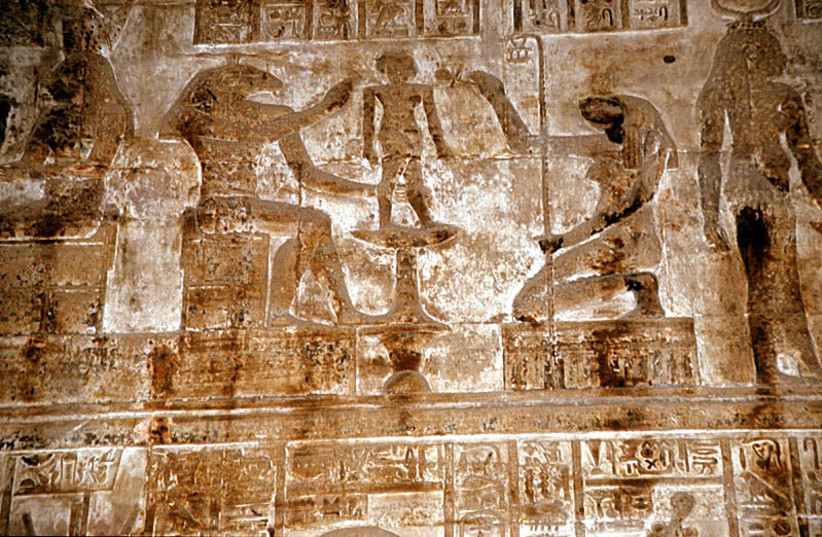Archaeologists discover rare Zodiac imagery in Egyptian Esna temple

The team made the discoveries during excavations at the temple of Esna, where they had been preserved by a layer of dirt and soot for almost 2,000 years.
Researchers successfully restored ancient Egyptian ceiling reliefs depicting the heavens, featuring zodiac signs, constellations, stars and planets, including Mars, Jupiter and Saturn at a temple dedicated to the Ancient Egyptian god, Khnum, his consorts Menhit and Nebtu, their son, Heka, and the goddess Neith.
In addition to the depictions of celestial bodies, the researchers, with Egypt's Tourism and Antiquities Ministry and the University of Tübingen in Germany and led by Ahmed Emam, also found previously unknown inscriptions and colorful images of crocodiles, snakes and mythical beasts, including a snake with the head of a ram and a bird with the head of a crocodile, the tail of a snake and four wings.
The team made the discoveries during excavations at the temple of Esna, where they had been preserved by a layer of dirt and soot for almost 2,000 years.
The only part that still remains of the temple, located 60km south of the city of Luxor, is a sandstone structure measuring 37 meters long, 20 meters wide and 15 meters high that was placed in front of the temple building itself during the reign of the Roman Emperor Claudius between 41 and 54 CE.
The fact that the structure was located in the city center likely contributed to its preservation, as other ancient edifices were often used as quarries for building materials during the industrialization of Egypt.
Researchers uncover additional structures next to the temple
The researchers also discovered the remains of a 1,400-year-old Roman bathroom with bathtubs, part of a cabin and a storehouse adjacent to the temple.
"Representations of the zodiac are very rare in Egyptian temples," said Professor Christian Leitz of the University of Tübingen, who supervised the project along with Hisham El-Leithy of the Egyptian Ministry of Tourism and Antiquities.
"The zodiac itself is part of Babylonian astronomy and does not appear in Egypt until Ptolemaic times." Researchers think the system of zodiac signs and their related constellations was introduced to Egypt by the Greeks and subsequently became popular.
"The zodiac was used to decorate private tombs and sarcophagi and was of great importance in astrological texts, such as horoscopes found inscribed on pottery sherds," said Dr. Daniel von Recklinghausen. "However, it is rare in temple decoration: Apart from Esna, there are only two completely preserved versions left, both from Dendera,” he says.
Jerusalem Post Store
`; document.getElementById("linkPremium").innerHTML = cont; var divWithLink = document.getElementById("premium-link"); if (divWithLink !== null && divWithLink !== 'undefined') { divWithLink.style.border = "solid 1px #cb0f3e"; divWithLink.style.textAlign = "center"; divWithLink.style.marginBottom = "15px"; divWithLink.style.marginTop = "15px"; divWithLink.style.width = "100%"; divWithLink.style.backgroundColor = "#122952"; divWithLink.style.color = "#ffffff"; divWithLink.style.lineHeight = "1.5"; } } (function (v, i) { });

